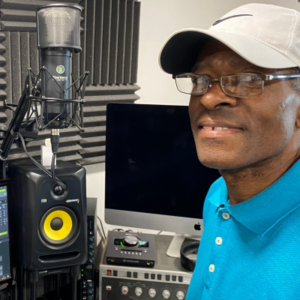John Joseph Brokensha, known as Jack, was probably the most surprising of the arrivals at Motown. He was born in Nailsworth, South Australia, in 1926. His father, who was a percussionist for the Adelaide Symphony Orchestra, taught him to play percussion, at which he excelled. He also learned to play piano and drums. As a youngster he played xylophone on stage and on radio, and then played in the Australian Symphony Orchestra for two years in his late teens.
By 1947, his first love was Jazz. He formed a group that included Bryce Rohde and Errol Buddle and played in many of Australia’s major cities until 1953, when he and pianist Bryce Rohde moved to Canada, where they set up the Australian Jazz Quartet in Windsor, Ontario, in 1954. The two additional musicians were Australian Errol Buddle (bassoon and saxophone), who was already living in Canada by this time, and American Dick Healey (flute and saxophone). They toured Canada and the USA, building up a strong reputation, and also played in Australia. The quartet also often added a bass player to become a quintet.
When the Jazz band broke up at the end of the fifties, Brokensha decided to move across the Canadian border into the USA. Detroit is just across the river from Windsor and that is where he settled, finding work on TV and radio, as well as setting up his own production company, writing advertising jingles, running a Jazz venue and playing in the local orchestra. He also managed to lead a band that he formed in Detroit, a quartet featuring Art Mardigan (drums), Dan Jordan (bass) and Howard Lucas (piano).

Brokensha’s 1963 Savoy Records album
Before long, he was spotted by Berry Gordy and invited to fill in on various sessions at Motown. He was christened White Jack by the other musicians to avoid any confusion with Jack Ashford (Black Jack), and went on to play on hundreds of recordings in Studio A. He was the most accomplished of the various vibes players hired by Gordy.
When Motown finally moved to Los Angeles in 1972, Brokensha stayed in Detroit, setting up a steakhouse and music club called Brokensha’s in a converted house not far from Motown’s old HQ. He continued with many of his other activities, including leading his own group for many years.
Jack Brokensha died in Sarasota, Florida, in 2010, aged eighty-four. He had achieved many things, but it was Quincy Jones who put his finger on the most important. When Brokensha was introduced to him, the comment from Quincy was: “Oh, you’re the guy who invented rock’n’roll vibes”. (Quoted in John Shand’s Obituary for the Sydney Morning Herald, 2010).
Bobbye Hall was the other new session musician whose presence may come as a surprise. Bobby Jean Hall was a young Black girl from Detroit, who had an amazing gift for playing percussion.
She was born in 1950, the same year as Stevie Wonder, and her first visit to Studio A came in 1961, again the same year as Stevie Wonder. Two childhood prodigies, one who is world famous and one who is barely known outside the industry.

Bobbye Hall in 1970
Photo: Sunkissis (Wikimedia Commons)
Bobby was playing at the 20 Grand club in Detroit one night in 1961, when Paul Riser first saw her. Her talent and enthusiasm was obvious to everyone, but Riser knew that she could add something special to the Motown Sound. He invited her to a session in Studio A, after which he stayed in touch. By 1963, Bobby was playing regularly, until towards the end of the decade she decided to go to Europe to develop her career. It was during this time that she changed her name to Bobbye, to ensure that no-one thought her name was really Robert.
In 1970, she came back to the USA and established herself as a session musician in Los Angeles. Soon she was playing on Motown recordings again, fully credited this time round!
















